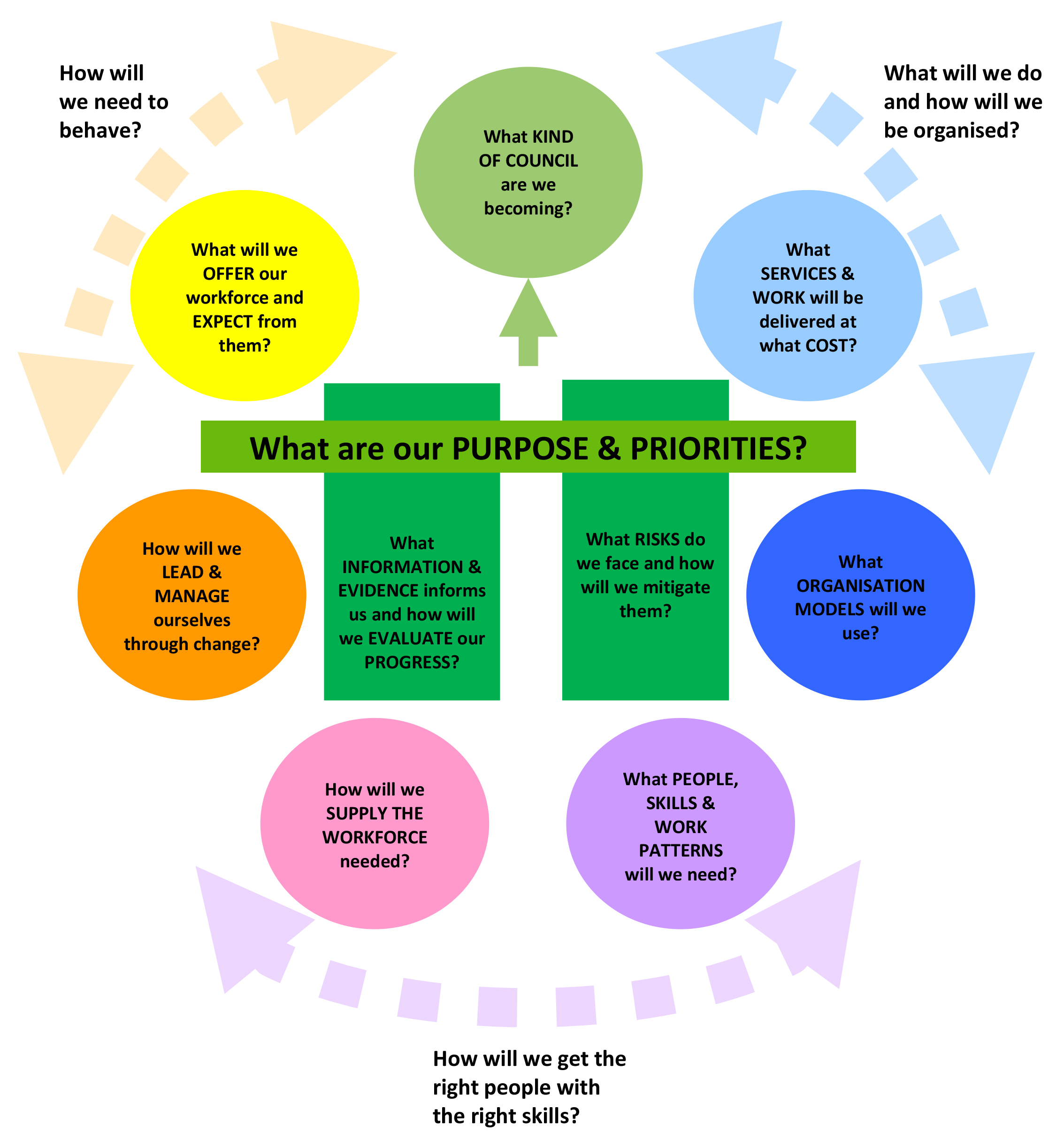A new business-workforce planning tool for uncertain times
1 Jul 2013
Wendy Hirsh, IES Principal Associate
 Local councils are right at the sharp end of public sector spending cuts and radically re-thinking what their communities need and how services can best be delivered for the public good. In this context, they need to reposition workforce planning within a correspondingly broader framework.
Local councils are right at the sharp end of public sector spending cuts and radically re-thinking what their communities need and how services can best be delivered for the public good. In this context, they need to reposition workforce planning within a correspondingly broader framework.
IES has worked with and sponsored the PPMA (Public Sector People Managers' Association) in addressing these challenges at a practical level. As one strand of the PPMA's work on the future public sector workforce, Sue Evans of Warwickshire County Council, Leatham Green of East Sussex County Council and Wendy Hirsh from IES have developed the Business-Workforce Dialogue Tool, with valuable help from colleagues in other councils. Although designed with councils in mind, much of the tool would be just as useful for other types of organisation.
The key features of the Business-Workforce Dialogue Tool are:
- It is broad and integrative, covering the big issues of purpose and priorities, finance, organisational models, culture, leadership and change management as well as the traditional issues of future workforce supply and demand.
- The two threads of risk and evidence run through the tool as a reminder not to jump to solutions without checking their likely effectiveness and sustainability. The format is very simple and intentionally brief. Each topic is framed in terms of a set of key questions on just one page, so you can easily scan it at a glance. It complements more detailed approaches to workforce planning, such as the IES Workforce Planning Guide (available from our website).
- It is very flexible to use. The clear, modular structure offers different start points and the chance to select your own priority topics. It has been designed for different sizes and types of council and for planning discussions at different levels within an organisation (from top team down to Directorate or service unit).
- It therefore supports dialogue in formal or informal settings and with varied stakeholders. It helps HR/OD people facilitate open-ended discussions with managers and Members, as well as structure formal planning processes or service reviews.

The tool is available to download for free from the IES website. Although designed with councils in mind, many of the ideas would be useful for other types of organisation
Early testers of the tool say it is both highly relevant and intuitively usable.
Sue Evans, Head of HR and OD at Warwickshire County Council, leads the working group and has piloted the use of the tool in her own council:
‘As we review what we do and how we do it, not just for less money but differently, I find this tool can help to open the debate and keep it focused, to frame the most relevant questions and support service reviews. Above all, it can position HR/OD at the heart of the change and transformation process as supporter, challenger, confidant and facilitator.’
A PPMA/IES workshop for HRDs and strategic workforce planners, hosted by London Councils on 26th June, gave a larger group the opportunity to work with the tool and explore its current and future use. Its clarity and flexibility were welcomed and the group felt it could help to frame a wide range of conversations with varied stakeholders including Members, Unions and employees as well as managers and leaders.
The tool is free to download from the IES website or for PPMA members from the Knowledge Bank at www.ppma.org.uk
For more information and also to give feedback on your experience of trying the tool for yourself please contact Wendy Hirsh at wendy.hirsh@employment-studies.co.uk or Sue Evans at sueevans@warwickshire.gov.uk

